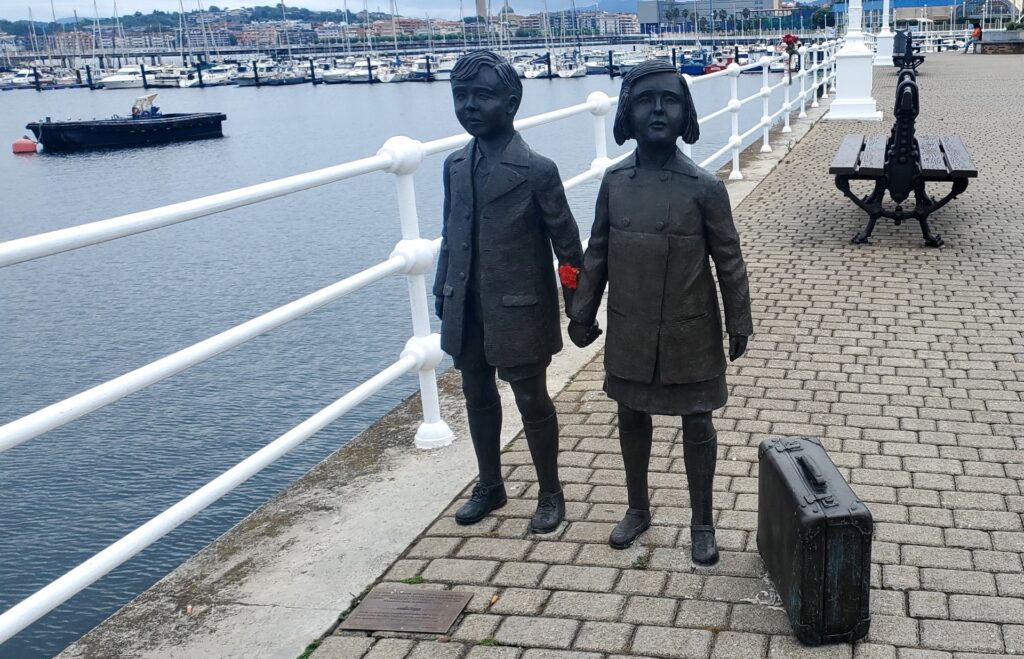In 1975, my Spanish college roommate invited me to Santurtzi in northwest Spain, the heart of the Basque region, to spend a month living with her aunt and helping in her grandmother’s restaurant. I went. It was quite an education for a college student who knew little about Spanish history and life under a dictatorship.
While there, a neighboring family was taken by police because their son participated in a protest. When I asked what recourse was possible for the family, the response was “none”, they had no rights. During my short stay, the Spanish dictator Franco died after decades of persecution of the Basque people in a history eerily comparable to the plight of Ukraine.
In 1937, following massive attacks on civilians, the Basque government organized the evacuation of its children without their parents in a desperate attempt to save them from violence, starvation and death. Twenty-nine thousand children were evacuated from the Basque country to Belgium, England, France, Russia, Switzerland and Mexico.
In May of 1937, 4000 children left Santurtzi by boat for refugee camps in England where they would be housed, cared for and provided an education. My roommate’s parents, aged 10 and 12, were among the children. Theirs is a colorful story that would eventually lead them to marriage and the Grand Rapids area where they started a successful business, raised their family and became citizens.
Today’s news is full of stories of desperate people seeking safety and a chance to work and live in peace. Between climate change destroying ways of life and authoritarian governments brandishing senseless human destruction, it’s overwhelming.
A recent trip back to Spain provided sustenance for hope.
Years ago, my friend suggested that when we both retired, we should hike El Camino de Santiago de Compostela, a thousand-year-old pilgrimage covering 504 miles from southwest France to Santiago de Compostela in northwest Spain. Also called The Way of Saint James, in Christianity it follows the life of Jesus’s Apostle James to where the Cathedral of Santiago de Compostela marks the burial site of his martyred body. Martin Sheen made a movie about it in 2010 called The Way.
Given that neither of us had ever attempted a day in day out cross-country hike, we decided to add in a couple breaks and hike only the last 75 miles of the hilly terrain, a distance sufficient to receive one’s Compostela, a verified certificate of completion.
Often leaving at sunrise, each dawn a steady stream of silent backpacked hikers appeared, coming from wherever they’d spent the night, all converging on the trail. As one gets closer to Santiago, more and more hikers appear. There are now multiple “Ways”: the Portuguese Way, the Northern Way, the English Way and so on. We were on the original French Way. All converge at Santiago.
Comradery among hikers was palpable. This was not a race; it was a trek of personal significance and meditation. People hike for religious reasons, or historic interest, or for the beauty or challenge. Words of encouragement, greetings as people passed, sharing of stories, tips on soreness or problems, all helping each other.
People came from countries across the globe, all ages, all languages, all walks of life. Some were in wheelchairs or on bicycle, many had completed multiple Caminos. There was a fellowship of common purpose, a powerful instance of hope and bonding in these troubled times.
Resilience and hope was emphasized further after El Camino on my return to Santurtzi for the first time in 48 years. In contrast to my first visit, now the Basque flag flew prominently, the heritage publicly celebrated, names and signs were in Spanish and Basque, and a bronze statue of two small children in traveling clothes marked the wharf where so many years ago they had to flee persecution.
A moving trip, a physical and spiritual renewal and hope for the future, a desire to help those less fortunate. Time well spent.

